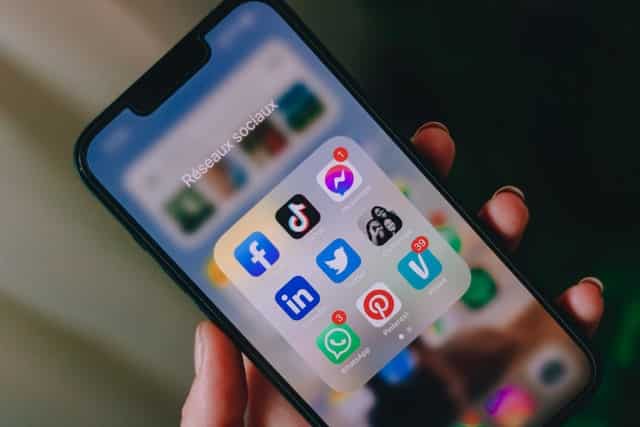Have you ever wondered how to become an influencer, whether it is to get free products from the brands that you love or to launch a speaking career in your industry?
You’re not alone.
With influencer marketing becoming such an important business segment, many people are jumping on the bandwagon on their given social media platform. Brands are finding that the influencer marketing ROI realized is very good — even exceptional. On the other side of the desk, potential influencers are eager to break into this business to leverage their existing audience into marketer’s target audience. Not only does it make good money for them, but it’s a rewarding way to profit from a hobby or special interest.
Let’s first clear the air about defining digital influence.
What exactly is an influencer?

An influencer is someone who has a close following on a social media platform (or several), and whose recommendations are followed.
From here, influencers are a diverse group. Some of them are industry leaders who share news and developments with other professionals. Another group is business travelers who talk about their adventures around the world with their target audience. Busy moms and housewives often discuss the latest recipe or household management tips with their target audience. People from all walks of life share their passions, which can be anything from beauty products or fashion to sports and more.
While many people have these discussions online, an influencer is someone whose opinions are taken more seriously on a social media platform, and whose focus may be more honed in on increasing their engagement rate, follower count, and overall performance.
Becoming an influencer takes time, but if you know how to become an influencer and have useful opinions, you can achieve this goal.
Further Reading: What is a Social Media Influencer? A Definition Explained in Plain English for You
How do influencers make money?

Social media influencers make money by partnering with brands and companies, but there are several different ways to accomplish this type of partnership. Different niches may prefer different types of content, and different platforms typically lend themselves more effectively to certain types of content. A video may perform better than a blog post in some situations, for instance, but a simple photo and Instagram post may be better than a long-form video in others.
At its beginning, influencer marketing focused largely on products themselves as payment; in exchange for a review or a shout out, influencers would receive free products or services. Influencer marketing has veered away from this type of structure with social media influencers (though it is not entirely gone and may be used more commonly with micro – influencers) in favor of more concrete payment models involving direct payments, commission-structured payments, or even a combination of the two. Influencers may also receive an ongoing fee or retainer if an ambassadorship program is being utilized for partnership and payment.
Having a large following on your social media channel is also usually seen as an important part of making money; after all, an influencer with millions of followers may be more likely to successfully turn influencing into a career than those who only undertake small influencer marketing campaigns. To better understand how to make money on your social media channel, we have broken down the different types of influencer marketing typically found on an influencer’s social media channel or platform.
Sponsored Content
Sponsored content is content that is created specifically for a brand, in return for a monetary sum. Sponsored content can vary in how it is delivered, how substantial it is, and what it looks like, but the basis remains the same: the brand or company pays the influencer to put together a sponsored post or video, and that video in some way features the brand or company in question. For some, this means creating a post that is entirely focused on the product. For others, that might mean putting a small blip into a larger video.
A swimsuit brand, for instance, might pay for a sponsored post wherein an influencer demonstrates the value of the suit while spending the day at the beach. A cold medicine company may sponsor a lifestyle video, with only a small blurb about how a parent cared for their child during a recent illness.
Brand Ambassador
Brand ambassadors provide sponsored content, but they do so under contract with a company or brand to provide that content long-term. Brand ambassadors often identify themselves as ambassadors in their profiles, and will post content on an ongoing basis for that brand or company. Brand ambassadors may not be engaged immediately; instead, ambassadorship may come after one (or more) successful campaigns have been completed. Ambassadors typically develop close relationships with the marketing teams they act as ambassadors for, and may even be invited to collaborate on a product down the line. Brand ambassadors are useful because they provide a sense of consistency for brands and influencers, both.
A brand ambassador for a bug spray company might post at least once weekly about the many uses of bug spray, whether they are hiking, headed to the beach, or off to a soccer game. Brand ambassadors can also shout out to their brands in simple photos and videos, such as those depicting a typical day or standard morning or evening routine.
Further Reading: What is a Social Media Brand Ambassador and How to Leverage Them for Influencer Marketing
Content Collaboration
Content collaboration differs from sponsored content, as it is typically utilized by the brand or company on its own site and on its own platforms, or involves creating something for the company, rather than for yourself. What this means is that an influencer might create a video depicting how a product can be used, which is then posted on the company’s website, rather than working a product into their own branding and content creation. This type of marketing can also come in the form of speaking at an event, creating a course, or collaborating on a webinar for the company.
Content collaboration can differ from month to month. One month, a brand might ask an influencer to create a product description for a product based on their experiences. Another, that same brand may request that social media influencers speak on behalf of the brand at a local expo or conference. In both cases, the content is created to be used by the company, rather than being used on your own pages and profiles.
Affiliate Marketing
Affiliate marketing is likely the second most frequently used influencer income stream, as it allows influencers to make fairly passive income. Affiliate marketing involves using special discount codes or links to refer the influencer’s audience back to the company. When a purchase is made using that link or code, the influencer gets a small portion of the profits. Affiliate marketing is one of the best and simplest ways to make money as an influencer, because it does not require you to collaborate, create products, or do a great deal of preparatory work. Instead, you must simply get your code or link from the brand or company you are working with, apply that code (or link) to your profile and other pages (including links in Stories on Instagram, the description box on YouTube, etc), and continue to shout out to your given companies and brands.
Is Your LinkedIn Working?
Just released: my new book to help professionals, entrepreneurs, and business owners maximize LinkedIn for real growth.
With years of LinkedIn expertise, Maximizing LinkedIn for Business Growth offers actionable steps to build your brand, expand your network, and drive results.
Start leveraging LinkedIn like never before—grab your copy now! Click the cover or button below to buy on Amazon.
Affiliate marketing usually follows a basic framework involving a shout out or description of a product or service, followed by an encouragement to check the product or company out for yourself via a specific link, or along with a discount code.
Further Reading: How Do Influencers Make Money from Social Media?
So how can you actually become an influencer?
Following these 13 steps will get you a long way.
Step 1: Choose Your Niche
When you think about it, finding your niche is the most difficult and important part of your journey. This is true not only because of competition, but because your niche needs to be something you can stay with for years. Learning more about your industry and topic is one of the most important factors for your success. After all, you’re asking people to take your advice and (later on) buy the things you endorse on your social posts.
Know your goals
In order to determine your niche, first think about your goals. Are you learning how to become an influencer so that you can influence the industry you’re already working in? Or is this more an issue of getting paid to pursue your hobby? For some influencers, the ultimate goal is to quit their day job and follow their dreams full time. Knowing your goals will help determine what niche you choose, because you want that niche to be compatible. For example, if you want to quit your day job then becoming an “industry expert” probably isn’t the best idea. On the other hand, hobby-related niches often work well for this–and your social media accounts may already have some content, because people often post about the things they love.
Understand your strengths and weaknesses
Part of finding your niche is understanding what you are good at. In this case, I’m not just talking about topics. I’m talking about your aptitudes in terms of content creation and networking skills. While learning how to be an influencer, you’ll need to understand the kinds of people who you hope to have for an audience and determine a realistic audience size. For instance, corporate executives have different personalities, but they all have a relatively narrow understanding of decorum within the same industry. Therefore, if you have trouble dealing with button down executives, you might pick a niche that avoids interacting with them much.
Here’s the other thing: as most people in sales will tell you, the most important part of getting people to trust you is to build a sphere of influence. To be an effective influencer, you need to pick your niche in such a way that you can connect with lots of people who share your interest. This is somewhat easier with certain niches like hobbies, and harder with technical topics that may not have a substantial influencer platform to begin with.
Step 2: Differentiate Your Niche through Researching Your Competitors

Now that you’ve decided what topic or industry you want to influence, it’s time to find out what other people are doing in order to be a successful influencer. In sales, we call this step “market research.” Before you start any quest to become an influencer, it’s important to know how you will differentiate yourself from the competition. After all, if your social profile looks like everyone else’s, there is little incentive to follow you. Some people learn how to become an influencer in highly competitive settings, but it is much easier to differentiate yourself if you understand what makes you unique, whether you are a fashion influencer, lifestyle influencer, or another type of influencer entirely. Standing out is vital.
Let’s look at a concrete example. Beauty and fashion are highly competitive markets for influencers, but there’s also plenty of work available. If you try to work primarily with gym clothes from major brands, then differentiating yourself will likely be very difficult. On the other hand, you might have more luck targeting polo shirt and loafer buyers. Many guys wear both types of clothing at different points throughout the week, but one niche is easier to break into than the other. Go with the easier target, and you might be successful in your influencer career sooner. Then again, if you hate polo shirts, then think about chasing the gym clothes market. Ultimately you want to compete in a space that makes you happy, but isn’t too crowded.
Step 3: Catalog Your Insights and Experience to Build a Content Strategy
Knowing how to share your knowledge and experience is critical when learning how to become a successful influencer. After all, you want people to consume the content you produce and learn to value your opinions. This is what brands look for when deciding who to work with, and the influencer marketing industry is not short on people eager to make social media posts their bread and butter.
Both as an exercise and in the name of planning ahead, it’s important to keep track of your insights–insights that can be turned into valuable content. When thinking about and researching your area of influence, be sure to keep a record of insights or conclusions you’ve reached. Over time, these entries will help you build a content strategy and calendars. Think about what inspires you the most, because this is the area you should concentrate on for a content strategy.
Step 4: Choose Your Content Format and Social Network

Most industries and niches can be covered on any social network using a variety of formats. However, some options are better than others for a given niche. For instance, LinkedIn and blogs are good places to produce a piece of content in the B2B space. These are more professional and allow for long-form written content. LinkedIn won’t work for most B2C industries, while blogs can easily accommodate just about anything. In particular, many family/home content creators use blogs.
If you love picture and video, consider YouTube or Instagram to create visual content. These forms of media are especially successful for lifestyle, fashion, and beauty. Craft makeup tutorials or video reviews in the beauty space or share Instagram photos of your latest vacation. The key here is to use a format and social network that is appropriate for your niche and plays to your content strengths.
Step 5: Create Optimized Social Media Profiles Aligned with Your Niche
All of your social media profiles should be crafted in such a way that it is clear across all of your social media networks who you are and what you create social media posts about. Maintain branding across your sites–think colors, format, and even fonts–to make sure that your loyal follower base can easily find you on all of your social channels. If one of your social channels uses your name, for instance, while your other social channels use the name of your blog, users may have a difficult time locating you and you will lose some of your ideal audience. Consistency is key when creating optimized profiles.
Step 6: Share Your Knowledge through Publishing
With a content strategy in hand, it’s time to start sharing what you know. Whether this means creating top-quality YouTube videos, a quirky TikTok jig, an Instagram photo, a guest post on a niche-related blog, or something else, it’s important to put your best face forward. For now, your content is the product you are offering to the world. Even later on, after you become a paid influencer, this content is what will keep people coming back for more.
Remember, the most important thing you can do is build your following into your ideal audience, and the easiest way to do this is by publishing regularly. Depending on the platform, you should create a regular post between two or three times a week and up to a couple of times a day. Posting frequency doesn’t have to match writing frequency, because you can create several small pieces in a day. Also, at some point, content curation becomes a possibility. Regardless of your strategy, frequent posting is the ultimate answer about how to become an influencer across all social channels.
Step 7: Engage Your Community

Once you start to build a small community around your content, it is critical to engage with that community across your social media networks. Your methods of engagement will vary based on the type of content you produce and the platform you use. For example, if you want to influence people on Instagram, then “like” their comments and share great pictures from their profiles. YouTubers might also like comments, but they can also do response videos featuring other influencers. Engagement should be done both on your channel and other people’s spaces to raise awareness. This is because responses give people an incentive to hang out on your social media profile and builds personal connections.
Keep in mind, engagement with your community will become more difficult as your following increases. Many of us believe that this is one reason why engagement rates for large followings start to decline: real connections become harder to come by. People will start following you just to see what you have to say, but if you don’t respond to them, a large number of followers will quit trying to reach you on your social platform. Brands look for high engagement rates, especially from Instagram influencers, so this is a metric you need to keep as high as possible.
Step 8: Network and Collaborate within Your Industry and with Other Influencers
Part of learning how to become an influencer is mastering the art of branding. Influencers are people with extensive name recognition within their specific niche, because people listen to what they are saying and pass on their insights. However, you can only build your following so far without interacting with other people in your industry. Great topic ideas will only get you so far.
To network more effectively, you need to work with other people. Since my niche is social media marketing, I go to a wide variety of in person events and conferences in a typical year. Here, I’ll talk to a lot of other marketers, direct competitors, and brands who might need marketing help. This allows me to expand my reach fairly quickly. Another way to accomplish this task is by doing guest posts for other influencers on their social accounts. You will see that I host other bloggers on my site, and I also reciprocate by posting for them.
These kinds of effort do two things: first, they’ll build your brand as an influencer. That’s true both in terms of niche and personality. As the saying goes, there’s more than one way to skin a cat. Some people produce colorful content with an offbeat sense of humor, while others are very serious. Over time, people will know these things about you, and it will help brands know if you are someone they’d like to work with. Finally, never underestimate the power of being a face behind a name within the influencer community.
Step 9: Build a Website or Blog

At some point, learning how to be an influencer means mastering other forms of branding. Unless your first medium is blogging, it’s time to think about building a blog. Many influencers do their primary content on one platform, then adapt it for print. For instance, there is a well-known financial services YouTuber who does reviews of credit cards and talks about reward points strategies. Then, he writes about the same topic on his website. Chances are that he is adapting those video scripts into blog posts.
Are you a blogger first? At some point, you will want to move that blog from a free blogging platform onto your custom website. It’s OK if the site is mostly blogging, like mine. But you’ll build more name recognition while enjoying increased monetization options if the URL is your own. Bloggers can also use this principle by posting links to their latest post on other social media platforms. Using this technique will increase traffic over time.
Step 10: Create a Media Kit
A media kit is a simple way to let potential collaborators know who you are, what your numbers are, and what you charge to work together. Media kits are vital for influencers of all shapes and sizes, as influencer marketing teams are looking for people with experience, who can demonstrate that they know what they are doing and are capable of creating authentic content that will successfully bring in new customers and leads.
Further Reading: How to Create a Rockstar Influencer Media Kit
Step 11: Sign Up to Influencer Apps and Marketplaces
Influencer apps and marketplaces can be invaluable tools for up-and-coming and established influencers, alike. These platforms are designed to not only match influencers to campaigns and companies that may be a good fit for them, but many also provide ways to get paid securely and connect with other influencers to improve connections and strengthen networks.
Further Reading: 15 Influencer Apps for Brand Collaborations and Monetization
Step 12: Reach Out to Brands for Collaboration Opportunities
Reaching out to brands you love is also a tried-and-true approach to influencer marketing. Do your research regarding any existing influencer marketing programs within these brands, familiarize yourself with their content, and reach out through DM on Instagram and Twitter, or go direct to the source via the brand’s PR content or LinkedIn. Using all of these approaches may result in the greatest likelihood of successfully creating interest in you as an influencer.
Step 13: Continue to Grow Your Network
Finally, once you have discovered how to be an influencer in a way that fits you, don’t stop there. Growing your network is a never-ending task that, over time, increases your stature in the industry. More than that, but as genuine followers are added to your network you can demand higher prices for sponsored posts. You are making money off of this, aren’t you? Getting to that first thousand followers or so is often the hardest part, especially if you produce high quality content. Diligently continue the path we have described here, and the sky is the limit.
Ready to Become an Influencer? Get Started by Beginning with Step 1 TODAY!
Often, learning how to be an influencer is the hardest part. Every influencer has their own ways of reaching out to followers, and business strategies vary significantly. However, once the appropriate formula has been developed the only thing holding you back is time and interest. You can’t expect to quit your day job right away, but given the right niche and effective marketing it’s possible to make sufficient income over time.
Photo by Jaime Lopes on Unsplash










Thanks for this great post! I’m heading over to your Twitter handle to throw my question. Cheers!
Sweet! I’ll be there!